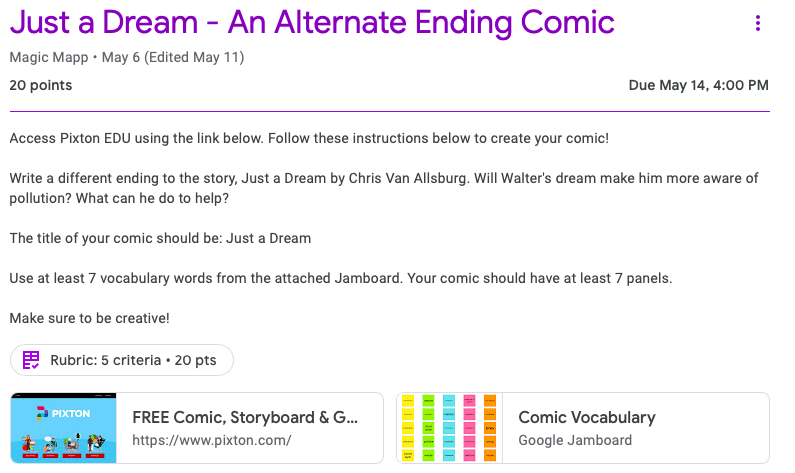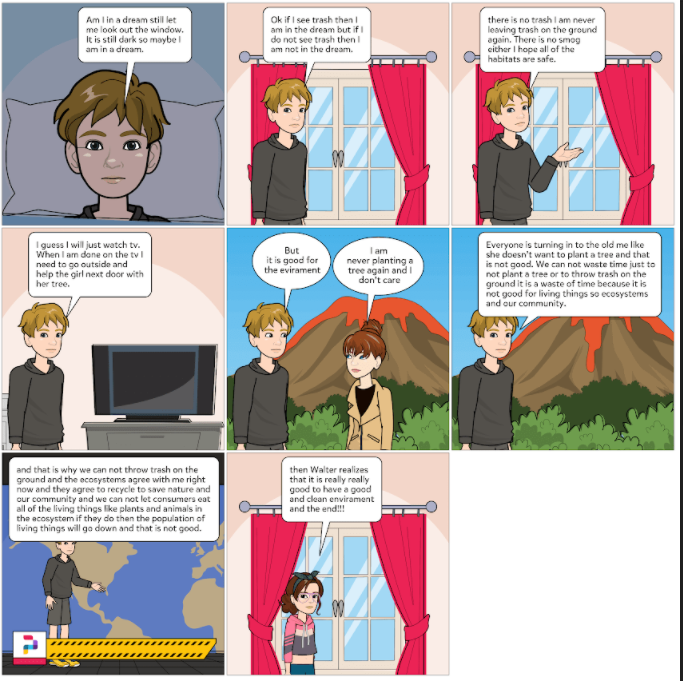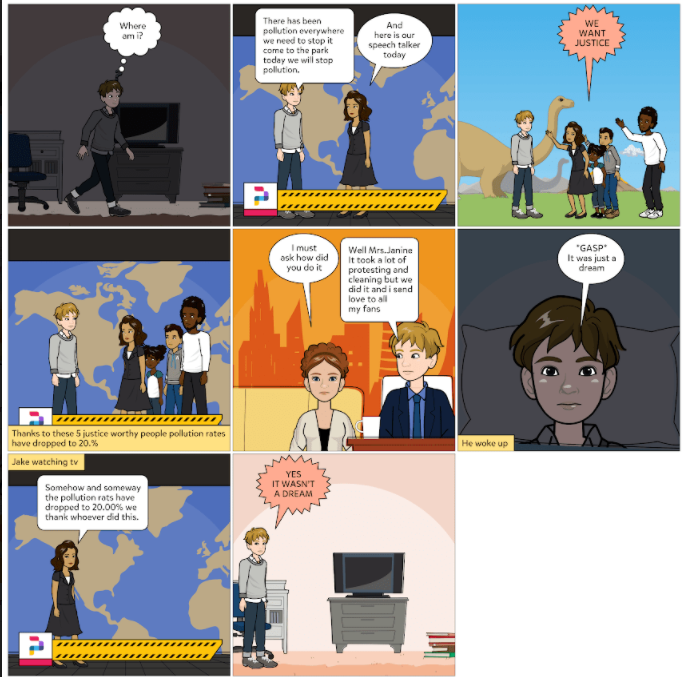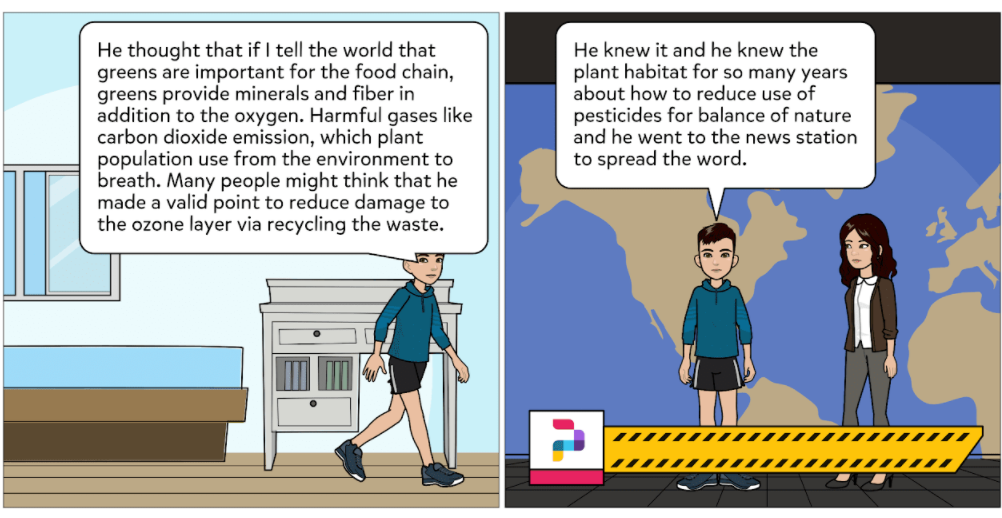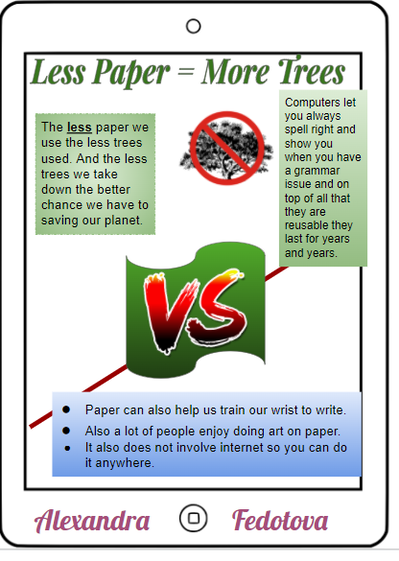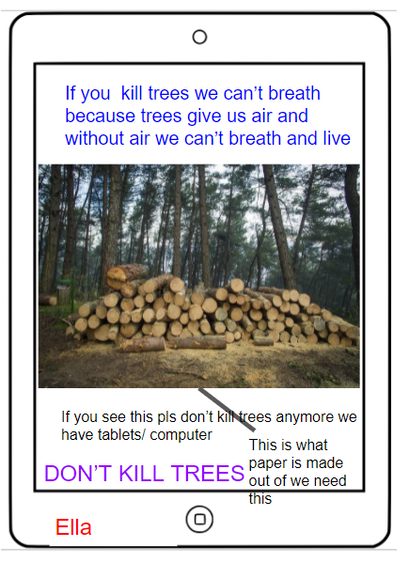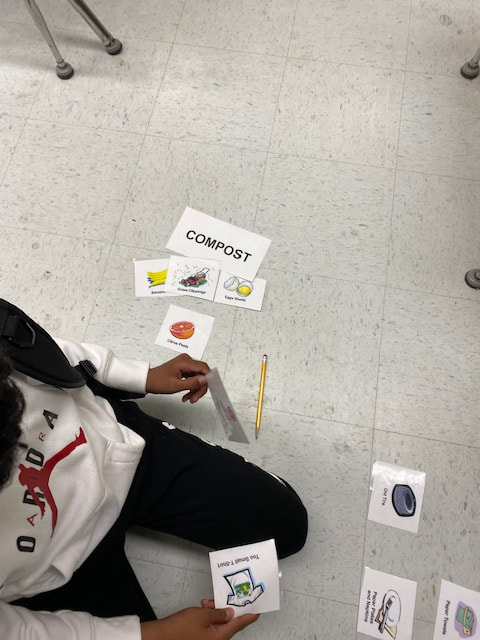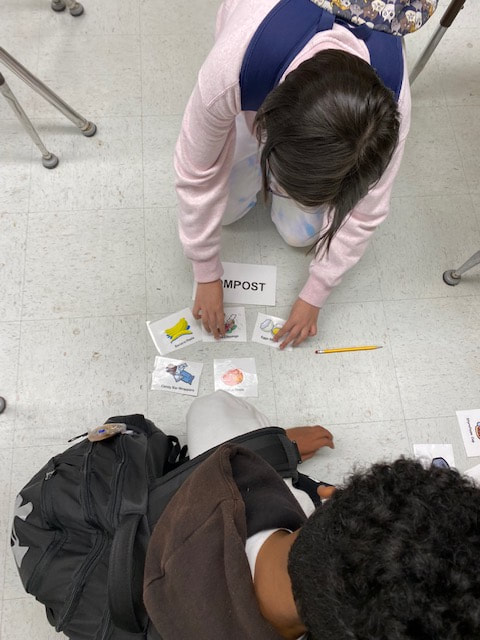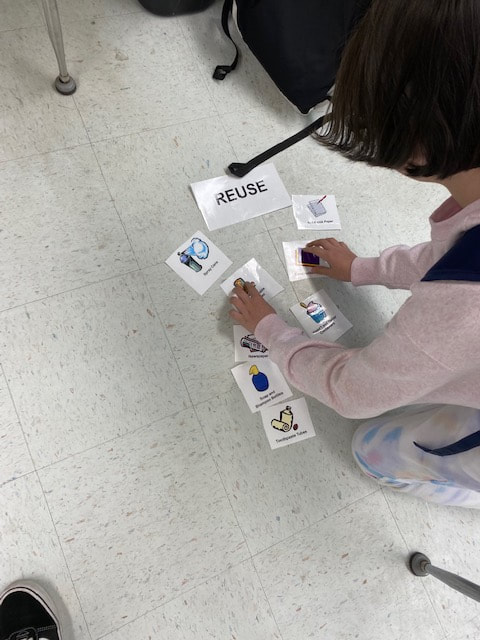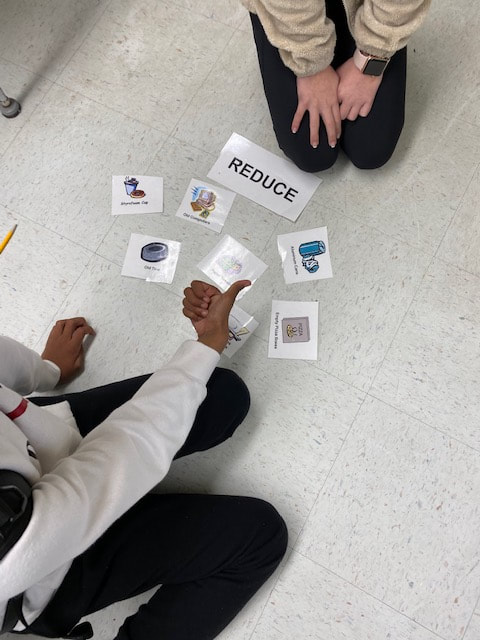Third Grade
In Third grade, teachers introduce their students to the effects of climate change, focusing mainly on plants and animals. Students practice being stewards of the earth by brainstorming creative ways of helping the plants and animals adapt.
3-LS4-4: Make a claim about the merit of a solution to a problem caused when the environment changes and the types of plants and animals that live there may change.*
Mr. Mapp's class read Just a Deam by Chris Van Allsburg. The main character Walter, has no regard for the environment. He litters and dreams of a future that has robots and flying cars. At night, he dreams and is taken to a dystopian future with excessive air pollution, overfishing, deforestation among other balances of nature. As students listened to me read the book, they completed a Jamboard cause/effect t-chart showing destruction or pollution and how that effected the balance of nature. They utilized Pixton EDU to create comics. They had instructions/rubric to follow and word bank of words to utilize within their stories.
Fourth Grade
In fourth grade, students answer the essential question, Essential Question: "How can natural resources be used to address human energy needs and how does their use affect the environment? Topics include: Solar Energy, Wind Energy, Water Energy, Nuclear
Energy, and Fossil Fuels. Students also work on engineering ways to harness and convert abundant forms of energy like wind, light, and waves to reusable electricity.
As a culminating project, students created virtual posters to share how using less paper can reduce the impact on forest, cut energy use, limit air and other pollution, and produce less waste.
In fourth grade, students answer the essential question, Essential Question: "How can natural resources be used to address human energy needs and how does their use affect the environment? Topics include: Solar Energy, Wind Energy, Water Energy, Nuclear
Energy, and Fossil Fuels. Students also work on engineering ways to harness and convert abundant forms of energy like wind, light, and waves to reusable electricity.
As a culminating project, students created virtual posters to share how using less paper can reduce the impact on forest, cut energy use, limit air and other pollution, and produce less waste.
Fifth Grade
In fifth grade, students gain a deeper understanding of their impact on the environment. Students focus on human activities in agriculture, industry, and everyday life, and how they affect the land, vegetation, streams, ocean, air and even outer space. Students also explore how to help protect Earth's resources and environments.
5-ESS3-1.Obtain and combine information about ways individual communities use science ideas to protect the Earth’s resources and environment.
In the activity below, students were sorting different items categories that included reuse, recycle, reduce, compost, and trash. Students discussed how some items fit into more than one category and had to defend placing of each item.
In fifth grade, students gain a deeper understanding of their impact on the environment. Students focus on human activities in agriculture, industry, and everyday life, and how they affect the land, vegetation, streams, ocean, air and even outer space. Students also explore how to help protect Earth's resources and environments.
5-ESS3-1.Obtain and combine information about ways individual communities use science ideas to protect the Earth’s resources and environment.
In the activity below, students were sorting different items categories that included reuse, recycle, reduce, compost, and trash. Students discussed how some items fit into more than one category and had to defend placing of each item.
